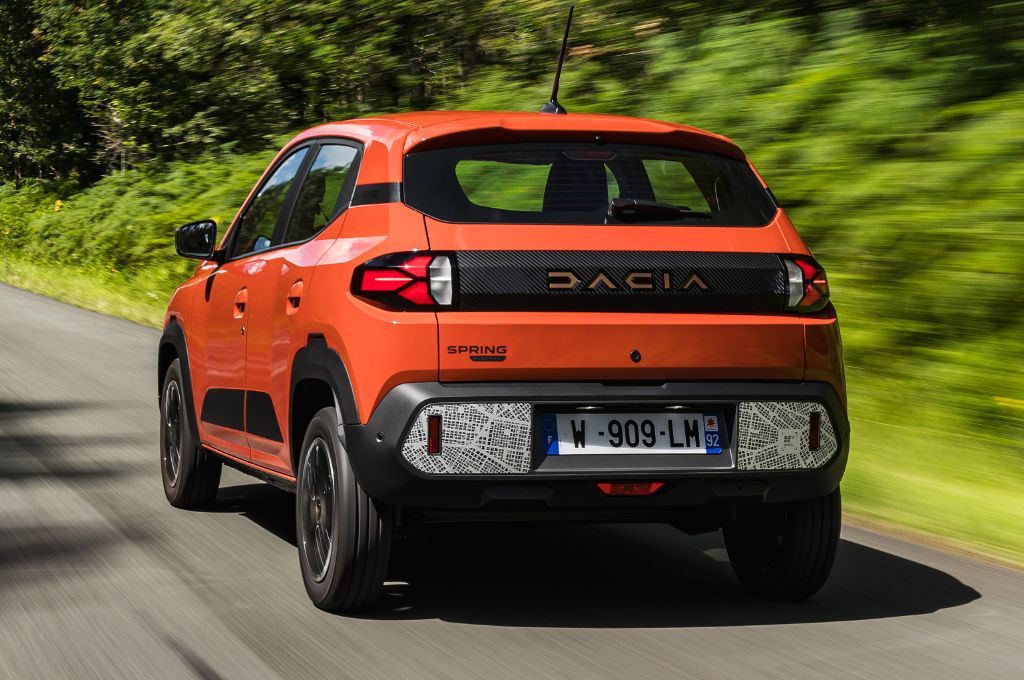Once you’ve successfully passed your practical driving test, the next step toward gaining newfound independence is selecting your first car.
The ideal first vehicle should strike a balance between safety, essential features, practicality, and ease of maneuverability, while also being among the most affordable options to insure.
To simplify your search, our experts have compiled a list of the top first cars for new drivers.
The expenses associated with purchasing and maintaining a car can be significant, particularly for first-time drivers.
With that in mind, we’ve carefully selected vehicles that excel in value for money, dependability, and fuel efficiency.
Additionally, each of these cars falls into lower insurance groups, making them cost-effective choices for young motorists.
All the models featured here are brand new, but there are also excellent used examples available at more budget-friendly prices.
Regardless of whether you opt for a new or pre-owned model, these vehicles remain reasonably priced, especially if financed through a Personal Contract Purchase (PCP) agreement or leased via a Personal Contract Hire (PCH) deal.
The Best First Cars for New Drivers
Read on to discover the top first cars for new drivers, selected based on extensive real-world testing.
1. Skoda Fabia
Overall Rating: 4.0
RRP: £20,295 — £58,747
Pros:
- Spacious interior
- Impressive on-board technology
- Comfortable ride
Cons:
- No hybrid variant available
- Noticeable road noise at higher speeds
- Lacks excitement in driving dynamics
Key Specification:
- Engine power: 80 – 240 BHP
- 0 – 62mph: 8 – 15.7 seconds
- Top speed: 108 – 137 MPH
- Fuel economy: 52.8 – 56.7 MPG
- Insurance group: 20E
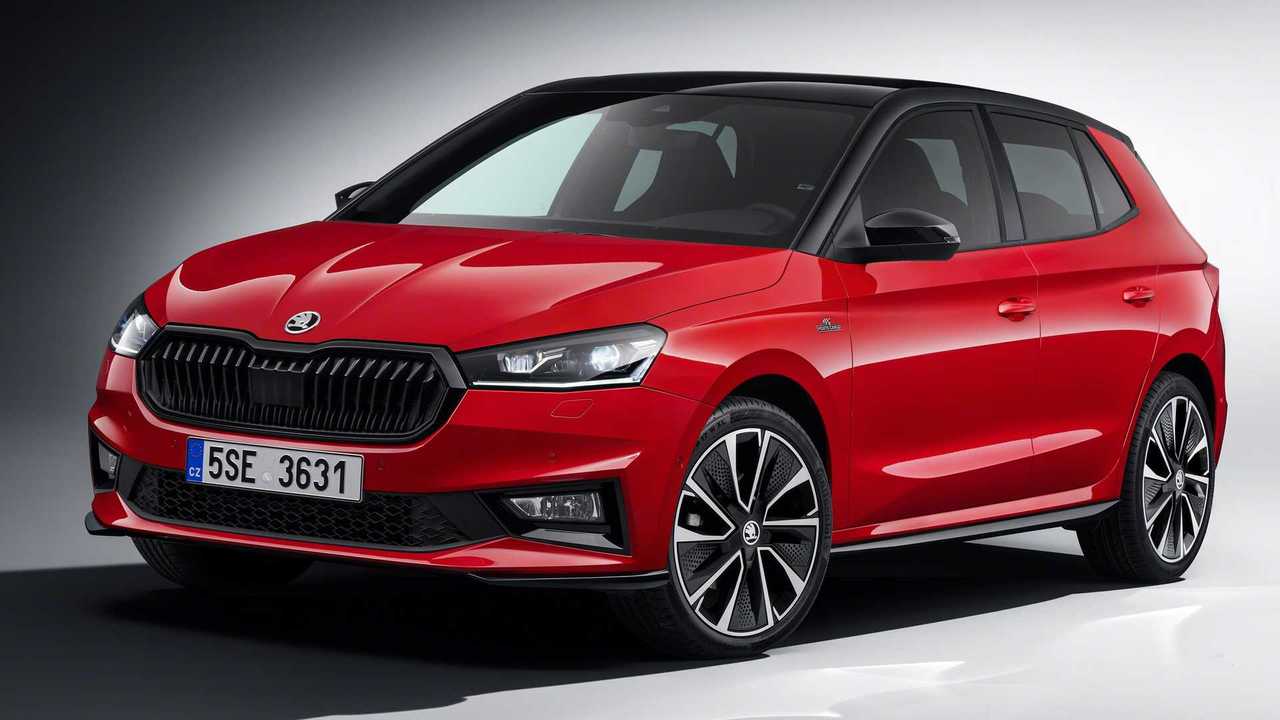
Choosing a car for a first-time driver can be a challenge. You’ll want a model that is compact and easy to drive while also keeping running costs, insurance premiums, and purchase price as low as possible.
The Skoda Fabia successfully combines all these factors, making it one of the most well-rounded options available.
Opting for the Fabia with the 1.0 MPI petrol engine in SE trim places it within insurance group four, ensuring it remains relatively inexpensive to insure.
Additionally, this model stands out as one of the most refined and spacious superminis on the market.
The 1.0-litre three-cylinder petrol engine may produce a modest 79bhp, but it delivers excellent fuel efficiency, achieving over 50mpg.
2. Kia Picanto
Overall Rating: 4.0
RRP: £15,845 — £19,395
Pros:
- Enjoyable driving experience
- Well-equipped with big-car features
- Spacious and well-built interior
Cons:
- 1.0-litre engine lacks power
- 1.2-litre engine is limited to higher-priced trims
- Larger and cheaper alternatives, such as the Dacia Sandero, are available
Key Specification:
- Engine power: 62 – 77 BHP
- 0 – 62mph: 13.1 – 18.2 seconds
- Top speed: 90 – 98 MPH
- Fuel economy: 50.4 – 54.3 MPG
- Insurance group: 3E – 7E
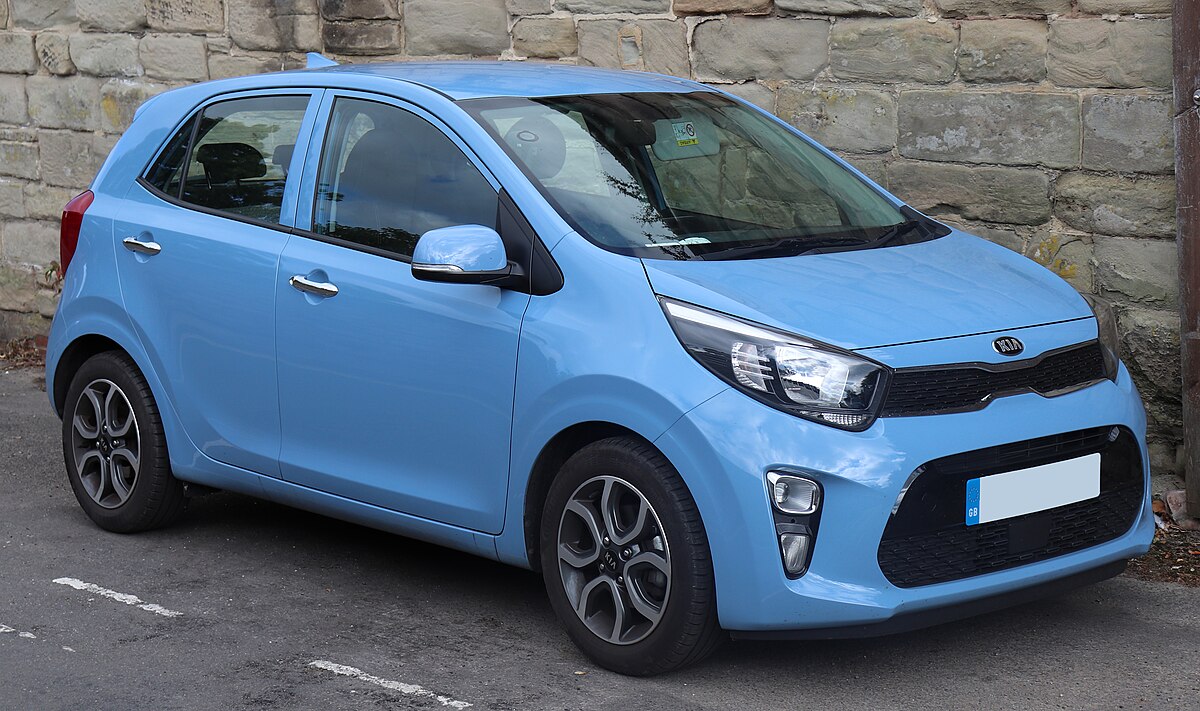
Over the years, the Kia Picanto has evolved into a stylish city car while maintaining its affordability. The latest iteration not only boasts an attractive design but also offers an impressive level of standard equipment.
Even the base ‘2’ trim comes equipped with an 8-inch touchscreen infotainment system, air conditioning, all-around electric windows, and 14-inch alloy wheels.
While none of the available petrol engines offer exceptional performance, they are all highly fuel-efficient. Drivers can choose between a manual or automatic transmission, depending on their preference.
Moreover, reliability is a strong point for the Picanto, as it benefits from Kia’s renowned seven-year/100,000-mile warranty as standard.
3. Hyundai i10
Overall Rating: 4.0
RRP: £15,880 — £19,430
Pros:
- Impressive onboard technology
- Spacious interior
- Stylish design
Cons:
- Automatic gearbox could be smoother
- Base engine lacks power
- Interior design feels uninspired
Key Specification:
- Engine power: 63 – 100 BHP
- 0 – 62mph: 10.5 – 17.8 seconds
- Top speed: 97 – 115 MPH
- Fuel economy: 49.6 – 55.4 MPG
- Insurance group: 1E – 10E
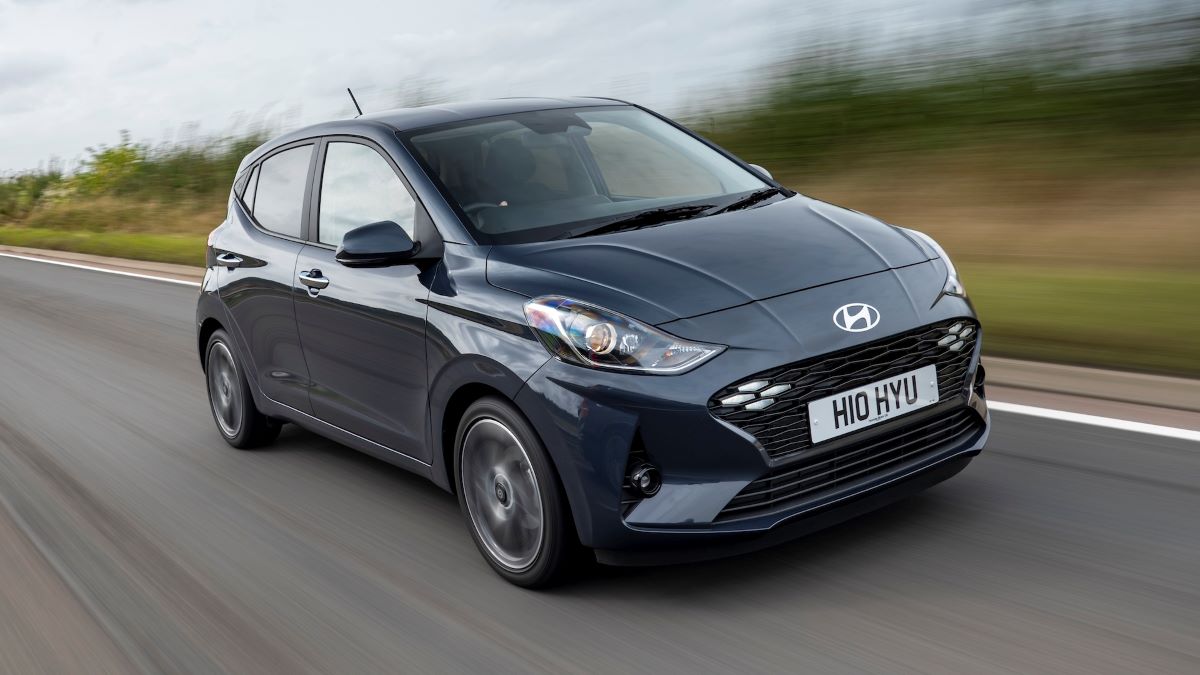
The Hyundai i10 may be a compact car, but it offers a surprising number of big-car features.
One of its standout advantages is that it qualifies for the coveted Group 1 insurance rating when selected with the automatic transmission in Advance trim.
However, this gearbox tends to be somewhat jerky in operation. If you prefer a smoother driving experience with the five-speed manual, you’ll have to accept a slightly higher insurance cost.
On the upside, Hyundai’s city car is fun to drive and comes well-equipped, even in its entry-level Advance trim.
Standard features include 15-inch alloy wheels, air conditioning, an eight-inch touchscreen with Apple CarPlay and Android Auto, rear parking sensors, a reversing camera, and cruise control.
Also Read: The 10 Longest-Lasting Cars You Can Buy: Toyota and Honda Top the List
4. Toyota Aygo X
Overall Rating: 3.5
RRP: £16,515 — £21,995
Pros:
- Bold, SUV-inspired design
- Generously equipped
- Convertible option available
Cons:
- Limited rear passenger space
- Interior design feels outdated
- Priced similarly to larger superminis
Key Specification:
- Engine power: 72 BHP
- 0 – 62mph: 14.8 – 14.9 seconds
- Top speed: 93 – 98 MPH
- Fuel economy: 56.5 – 58.9 MPG
- Insurance group: 5A – 8A
The Toyota Aygo X injects some SUV flair into the city car segment. With rugged plastic cladding on the wheel arches and standard 17-inch alloy wheels, it has a more imposing road presence than most city cars.
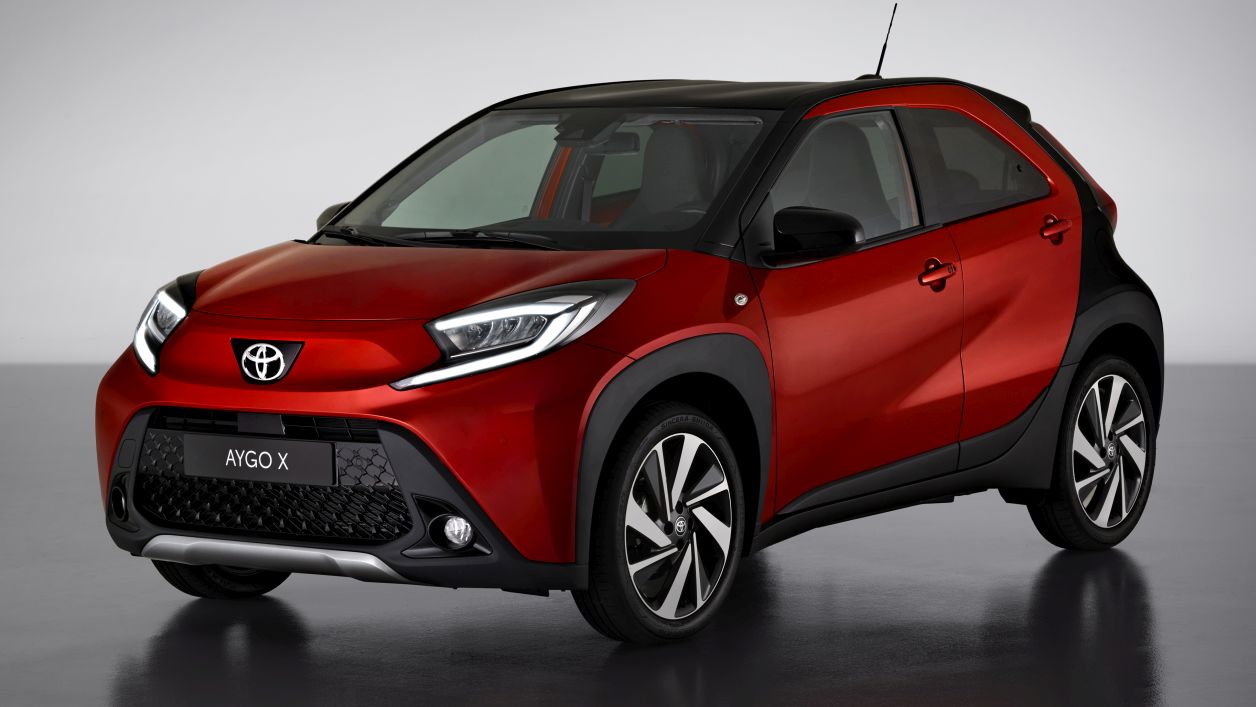
Despite its toughened-up styling, its compact 3.7-metre length allows it to maneuver effortlessly into tight parking spaces. Plus, a standard-fit reversing camera helps reduce the risk of minor bumps.
Under the hood, the lively three-cylinder engine adds character to the drive while keeping insurance premiums manageable.
Inside, body-colored accents on the door panels add a touch of personality, and the central touchscreen comes with Apple CarPlay and Android Auto.
While it isn’t as refined or spacious as the Kia Picanto or Hyundai i10, it still offers plenty of appeal for urban drivers.
5. Volkswagen Polo
Overall Rating: 4.0
RRP: £21,210 — £30,430
Pros:
- Premium-quality interior
- Smooth and composed ride
- Spacious cabin
Cons:
- Not the most engaging to drive
- Pricey for a supermini
- GTI version is underwhelming
Key Specification:
- Engine power: 80 – 207 BHP
- 0 – 62mph: 6.5 – 15.6 seconds
- Top speed: 106 – 150 MPH
- Fuel economy: 49.6 MPG
- Insurance group: 3E – 25E
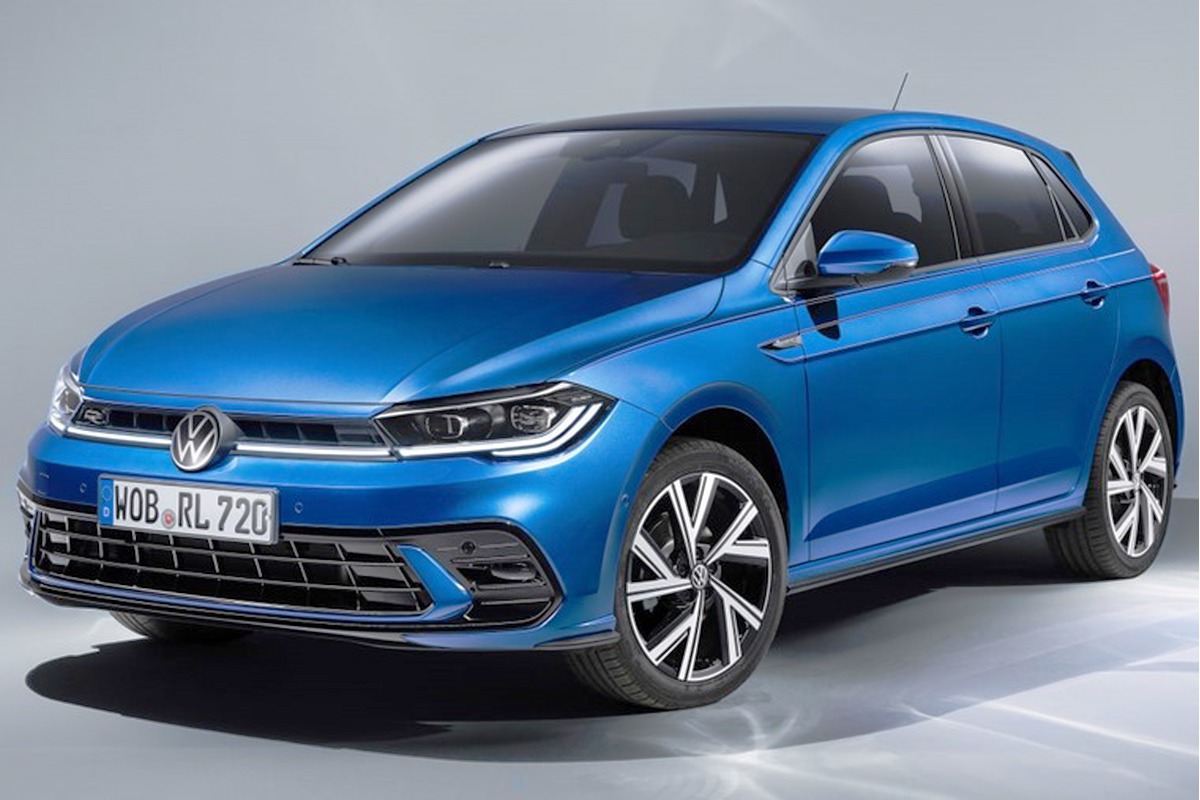
If you’re looking for a supermini that feels more refined and mature, the Volkswagen Polo is a top contender.
With multiple versions available, the base ‘Life’ trim is well-equipped, featuring alloy wheels, automatic headlights, a DAB radio, electronic stability control, and rain-sensing automatic wipers.
Despite its larger size compared to previous generations, the Polo remains easy to maneuver and park. For added convenience, the optional Driver Assistance Package includes parking assist, making city driving even simpler.
6. Dacia Sandero
Overall Rating: 4.0
RRP: £14,200 — £17,700
Pros:
- Improved cabin quality
- More enjoyable to drive than before
- Exceptional value for money
Cons:
- Jerky power delivery in TCe versions
- Noticeable cabin noise
- Low two-star Euro NCAP safety rating
Key Specification:
- Engine power: 91 – 100 BHP
- 0 – 62mph: 11.6 – 13.4 seconds
- Top speed: 105 – 110 MPH
- Fuel economy: 49.6 – 53.3 MPG
- Insurance group: 12E – 14E
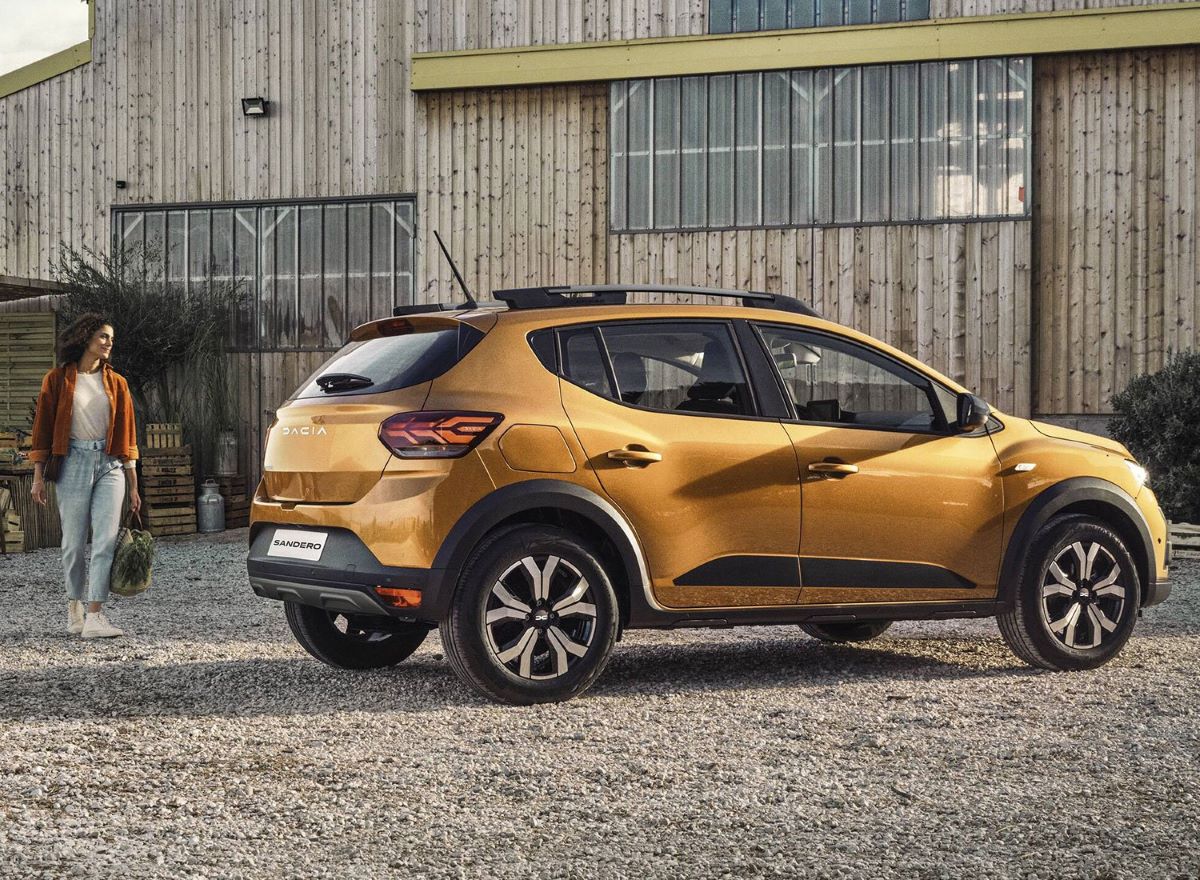
The Dacia Sandero is one of the most affordable new cars available in the UK. Built on the same platform as the latest Renault Clio an already well-regarded supermini the Sandero offers great value for money.
While its standard equipment isn’t as generous as some rivals, it still covers the essentials. With a starting price of under £15,000, it delivers solid practicality with five seats, five doors, and a 320-litre boot.
Though it won’t provide the most thrilling drive, it remains a cost-effective choice for new drivers, with insurance groups starting as low as 7.
7. Dacia Spring
Overall Rating: 4.5
RRP: £14,995 — £16,995
Pros:
- Among the most affordable EVs available, making electric driving more accessible
- Surprisingly practical for its size, offering a 308-litre boot that expands to 1,004 litres with the rear seats folded
- Ideal for city driving, thanks to its agile handling, easy parking, and tight turning circle
Cons:
- Rear knee room is limited, which may make taller passengers feel cramped in the back
- Steering wheel adjusts only for rake, with no reach adjustment, potentially affecting driving comfort
- The base 44bhp model lacks power, making the 64bhp version a better choice for more practical performance
Key Specification:
- Power: 45 – 65 BHP
- 0 – 62mph: 13.7 – 19.1 seconds
- Top speed: 78 MPH
- Efficiency: 4.4 miles per kWh
- Range: 140 miles
- Insurance group: 24A – 25A
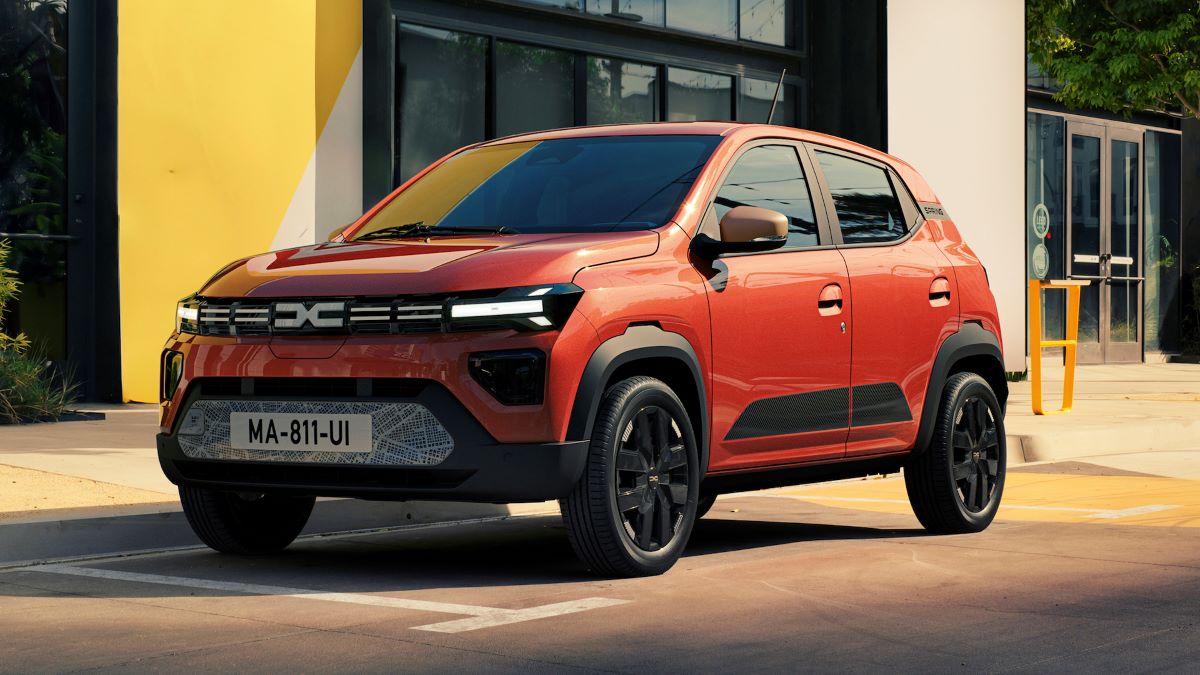
For those considering an electric vehicle as their first car, the Dacia Spring offers a budget-friendly way to go green. At just £15,000, it’s one of the most affordable new EVs on the market.
While it isn’t the most technologically advanced option available, it delivers a simple, no-nonsense approach to urban driving, with the added benefit of zero emissions.
The base Expression model comes with a 26.8kWh battery, capable of delivering a range of up to 140 miles on the WLTP combined cycle.
While this might seem limiting at first, it’s more than sufficient for everyday city commutes and short trips.
8. Renault Clio
Overall Rating: 4.5
RRP: £18,595 — £24,895
Pros:
- Eye-catching design with a bold new look
- Generous equipment list, even in base trims
- Engaging driving experience
Cons:
- Rear seat space is slightly cramped compared to some rivals
- Hybrid models have a noisy petrol engine
- Standard petrol version feels sluggish
Key Specification:
- Engine power: 90 – 143 BHP
- 0 – 62mph: 9.3 – 12.2 seconds
- Top speed: 112 MPH
- Fuel economy: 53.3 – 67.3 MPG
- Insurance group: 10E – 16E
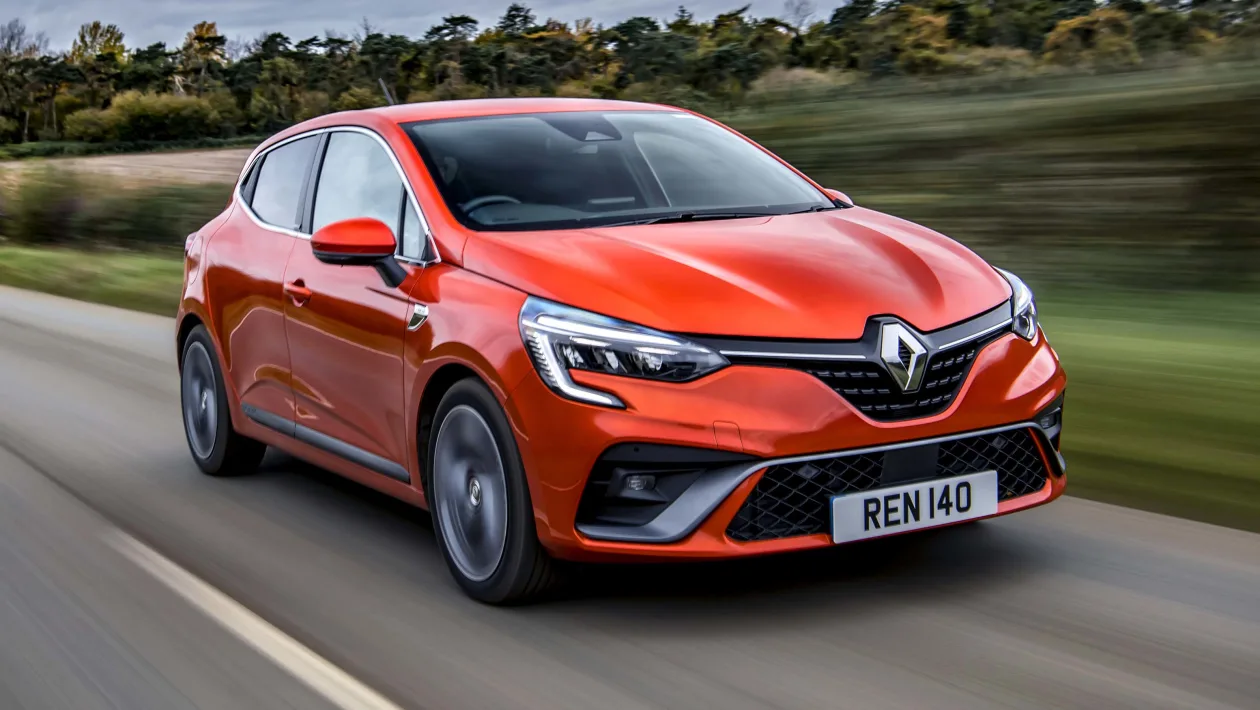
For those who appreciate stylish design, the Renault Clio stands out as one of the most attractive superminis on the market.
However, it offers more than just good looks it also comes packed with a generous array of standard features and even has the option of hybrid power for those seeking greater fuel efficiency.
Opting for the petrol-powered version still delivers impressive economy, with the three-cylinder TCe 90 engine achieving over 50mpg on the WLTP combined cycle.
Additionally, the Clio offers one of the largest boots in its class, boasting a 391-litre capacity perfect for those who need extra storage space without upgrading to a larger car.
9. Vauxhall Corsa
Overall Rating: 3.5
RRP: £18,505 — £34,435
Pros:
- Strong engine options
- Improved infotainment system
- Good refinement
Cons:
- Limited rear passenger space
- Ride quality never fully smooths out
- Electric version comes with a high price tag
Key Specification:
- Power: 100 – 156 BHP
- 0 – 62mph: 8.2 – 10.8 seconds
- Top speed: 93 – 133 MPH
- Efficiency: 3.8 – 4.4 miles per kWh
- Range: 215 – 252 miles
- Insurance group: 19E – 30D
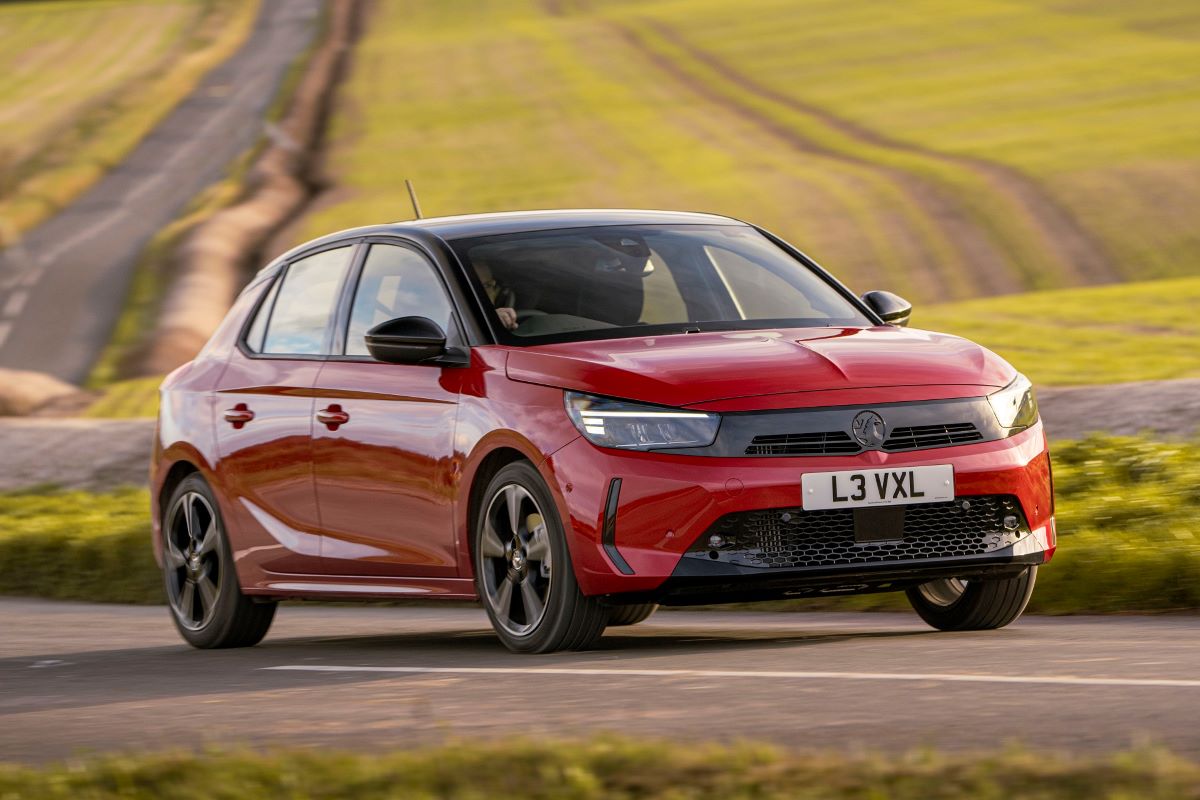
If you’ve ever taken driving lessons in the UK, chances are you’ve spent time behind the wheel of a Vauxhall Corsa. This supermini remains a favorite among instructors and new drivers alike due to its approachable nature.
Even if you learned in another vehicle, the Corsa is an easy-to-drive, practical, and fuel-efficient option with a good balance of performance and comfort.
The Corsa lineup includes multiple powertrains and trim levels, catering to a variety of budgets and preferences.
The petrol version offers the most affordable entry point, while those willing to invest more can opt for hybrid or fully electric models.
Regardless of trim, all versions come well-equipped with features such as alloy wheels, LED lighting, and a 10-inch touchscreen that supports Apple CarPlay and Android Auto.
Also Read: Top Unique Car Names and Their Surprising Meanings
10. Fiat 500
Overall Rating: 4.0
RRP: £24,995 — £33,995
Pros:
- Agile and fun to drive in urban settings
- Well-equipped with modern tech
- Stylish design
Cons:
- Cramped rear seating
- Ride can be unsettled on larger wheels
- Light steering feels too vague at higher speeds
Key Specification:
- Power: 95 – 118 BHP
- 0 – 62mph: 9 – 9.5 seconds
- Top speed: 84 – 93 MPH
- Efficiency: 4.2 – 4.8 miles per kWh
- Range: 118 – 194 miles
- Insurance group: 16D – 21D
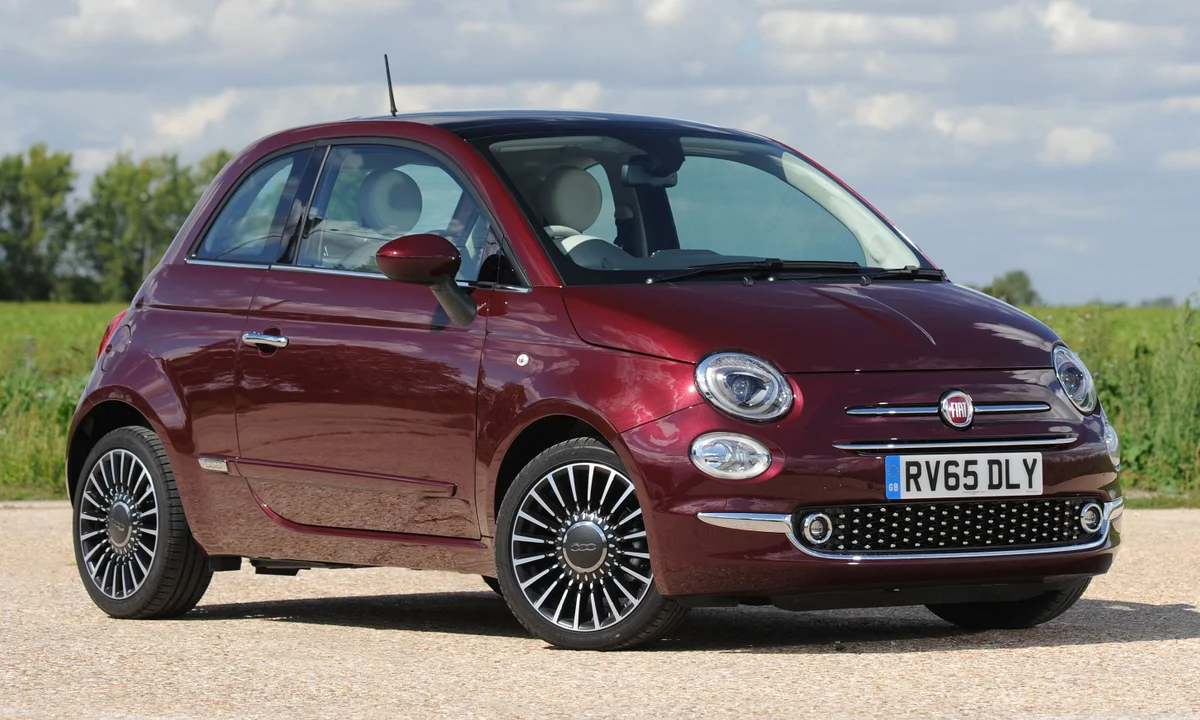
The Fiat 500e delivers the same stylish charm as its petrol-powered predecessor but with the added benefits of an all-electric drivetrain.
While it sits at a higher price point than the Dacia Spring, its blend of retro appeal and modern technology has earned it the title of City Car of the Year twice.
Like the original Fiat 500, the electric version is packed with personality and is perfect for city driving.
If range anxiety is a concern, the larger 42kWh battery is the best choice, offering a claimed range of up to 199 miles on the WLTP combined cycle.
What to Consider When Choosing a First Car
When shopping for a first car, there are several key factors to keep in mind. Here are some important questions to ask before making a decision.
Is It Affordable to Insure?
One of the biggest challenges for new drivers is dealing with high insurance costs. As a beginner on the road, your lack of experience works against you in the eyes of insurers.
However, if you manage to drive safely for 12 months without making a claim, you’ll begin accumulating a no-claims discount, which will lower your premium. The longer you maintain a clean record, the greater the discount you’ll receive.
Some finance deals even include free insurance, though these often come with significantly higher monthly payments.
Another way to reduce insurance costs is by installing an insurer-approved ‘black box.’ This small electronic device connects to your car’s system and tracks your driving habits.
Both you and your insurer can review the data to identify areas for improvement. If you consistently demonstrate safe driving behavior, your insurer may lower your premium even further.
How Safe Is It?
For those fortunate enough to have parents buying their first car, safety is often a top priority.
If this applies to you, it’s worth looking at cars with the highest Euro NCAP safety ratings generally, the higher the rating, the safer the vehicle.
Opting for a new car rather than an older, second-hand model also enhances safety, as modern vehicles come equipped with the latest safety features.
These may include advanced driver assistance systems such as autonomous emergency braking and lane-keeping assist, which can actively help prevent collisions.
Which Fuel Type Should I Choose?
When selecting a fuel type, petrol is generally the best option for a first car. Diesel models have become increasingly rare in the small car market, and unless you plan to cover long distances on motorways, the fuel savings of a diesel car won’t justify the extra cost.
A small petrol engine is typically the most cost-effective choice, especially if it includes a stop-start system to improve fuel efficiency.
While it might take a little time to get used to the engine shutting off when the car is in neutral, this feature helps save fuel and reduce running costs.
If your budget allows, consider a hybrid model. These vehicles combine a petrol engine with an electric motor, reducing fuel consumption and emissions while also cutting costs.
However, it’s important to understand that different types of hybrids exist, each with its own benefits and limitations depending on how the car is used.
For those interested in going fully electric, there are many compact and user-friendly EVs available. However, electric cars generally come with higher upfront costs compared to petrol, diesel, or hybrid models.
Additionally, insurance premiums can be more expensive. That said, savings on fuel and tax incentives may help offset these expenses.
Before committing to an electric vehicle, ensure you have access to a charging solution, such as a home charger, to make ownership more convenient.
Is It Easy to Drive?
When choosing a first car, ease of driving is crucial. Features like light steering, good visibility, a responsive engine, reliable brakes, intuitive controls, and a smooth gear shift all contribute to a positive driving experience, helping new drivers gain confidence behind the wheel.
It’s a good idea to take test drives of several models on your shortlist to determine which one feels the most comfortable and suitable for your needs.
Keep reading to discover everything you need to know about learning to drive, obtaining your licence, and selecting the perfect first car

